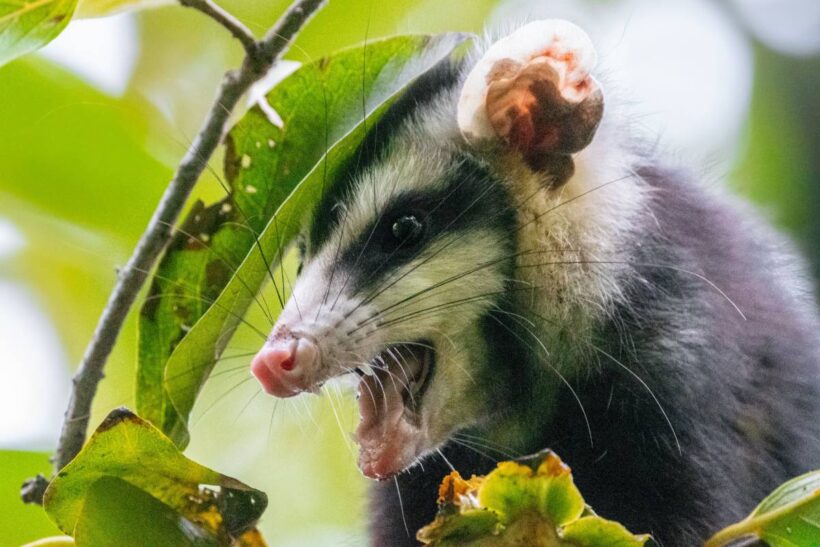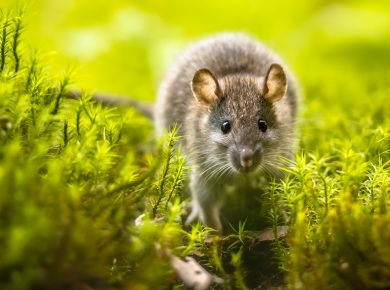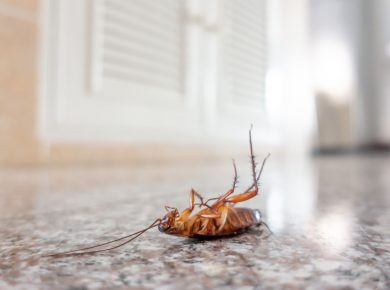Opossums, with their intriguing nocturnal habits and distinctive appearances, often find their way into our surroundings. While these marsupials play a crucial role in maintaining ecological balance, their presence can pose challenges for homeowners.
In this exploration, we delve into the question of whether opossums are dangerous, decipher the signs that indicate their presence, and discover practical ways to keep them at a respectful distance. Understanding these facets allows us to appreciate the importance of coexistence while ensuring a harmonious living space.
Are Opossums Dangerous?
Opossums, often referred to as “possums,” are interesting creatures that play a unique role in our ecosystem. While they may appear intimidating due to their sharp teeth and somewhat rat-like appearance, it’s essential to understand that opossums are generally not dangerous to humans.
Firstly, opossums are marsupials, which means they carry their babies in a pouch, similar to kangaroos. This distinctive characteristic sets them apart from most other mammals we encounter. Opossums are opportunistic omnivores, and their diet includes a wide range of foods such as fruits, insects, small animals, and even carrion. This eclectic diet makes them adaptable and able to thrive in various environments.
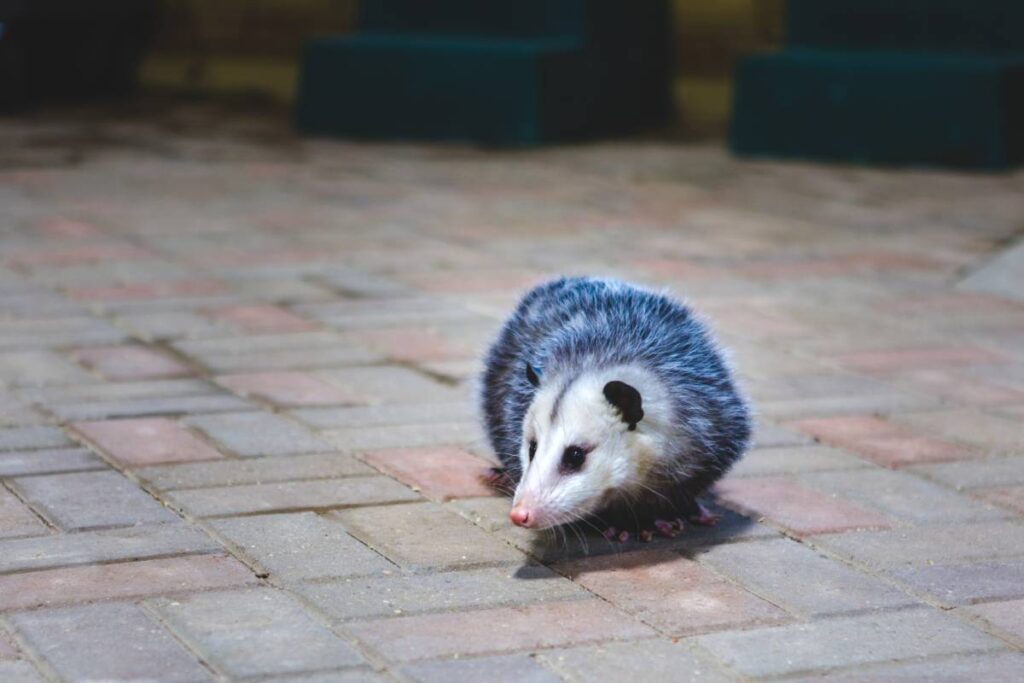
One of the reasons opossums are not considered dangerous is their temperament. These creatures are not aggressive by nature and usually prefer to avoid confrontation. When confronted, their first instinct is to play possum – a defence mechanism where they feign death to deter potential threats. This behaviour, along with hissing and growling, is more of a survival tactic than an indication of aggression.
Opossums are beneficial for the environment and even for humans. They help control the population of insects and small pests since they consume a variety of creepy crawlers that can be harmful to gardens and crops. Additionally, opossums are known to eat ticks, which helps reduce the spread of tick-borne diseases. Therefore, having opossums around can be considered a natural form of pest control.
Despite their generally harmless nature, it’s important to exercise caution around opossums, especially if you encounter them in urban or suburban areas. They may become stressed or feel threatened if cornered, and like any wild animal, they might bite or scratch in self-defence. It’s advisable to observe them from a distance and allow them a clear path to retreat.
Pet owners should also be aware that opossums may occasionally venture into yards in search of food. While they are not known to be a significant threat to pets, it’s wise to supervise interactions to prevent any unnecessary conflicts. Keeping pet food indoors and securing trash cans can help minimize the likelihood of attracting opossums to your property.
How To Tell If You Have An Opossum?
Detecting the presence of an opossum around your home or garden doesn’t require a detective’s skill. Opossums leave behind some telltale signs that can help you identify their visit.
Let’s break it down.
1. Nighttime Noises: Opossums are nocturnal creatures, meaning they come out mainly at night. If you hear rustling or shuffling sounds in your yard during the evening hours, it could be a sign of an opossum on the move. Their activities may include foraging for food, so listen for subtle but persistent noises.
2. Footprints and Tracks: Opossums have distinctive footprints with five toes on both their front and hind feet. If you spot tracks resembling small handprints with a long, rat-like tail mark, it’s likely an opossum has paid a visit. Check soft ground or mud near your home, as this is where their prints may be most visible.
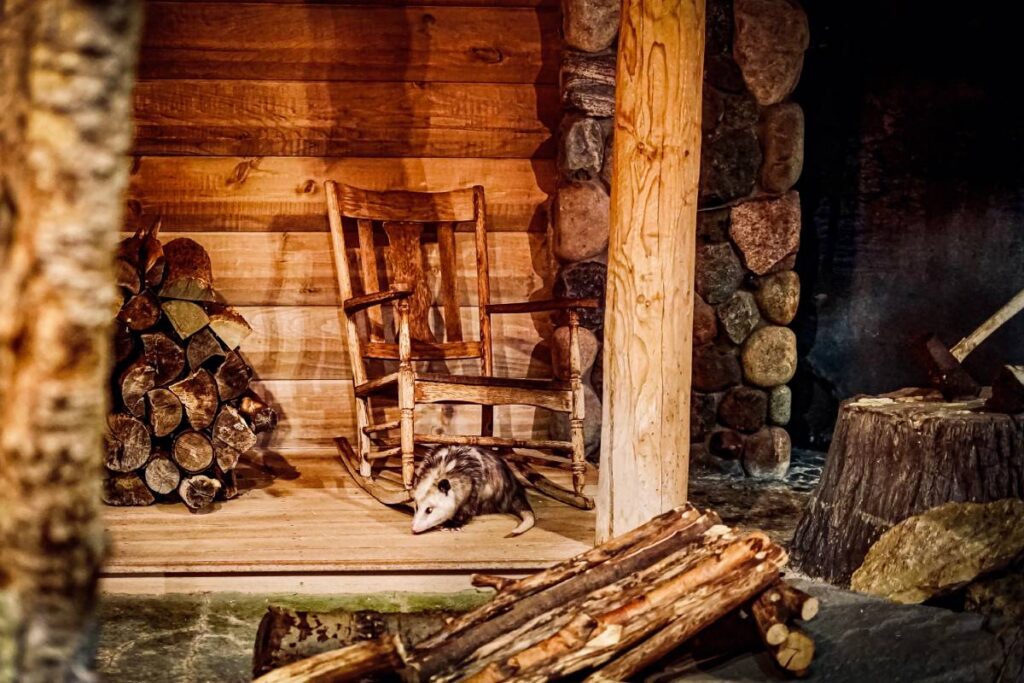
3. Droppings (Scat): Opossum droppings are another clue of their presence. Their scat is relatively small and often cylindrical, resembling that of a cat. It may contain bits of undigested food, making it a bit easier to distinguish from other animal droppings. If you notice this in your yard or garden, an opossum might be nearby.
4. Disturbed Trash or Garden: Opossums are opportunistic feeders, and they may rummage through your garbage or garden in search of food. If you wake up to a messy trash can or find your garden plants disturbed, an opossum could be the culprit. They have a varied diet, so almost anything can attract their attention.
5. Pet Behavior: Keep an eye on your pets. Dogs, in particular, may react to the presence of an opossum with barking or agitation. If your furry friends are displaying unusual behaviour, it might be worth investigating if there’s an opossum nearby.
6. Visual Confirmation: Of course, the most straightforward way to identify an opossum is by spotting one directly. Opossums have distinctive long, hairless tails and pointed faces. They are roughly the size of a large house cat, with grey fur and sometimes a white face. If you catch sight of a creature with these features, it’s likely an opossum.
What To Do If You Suspect an Opossum
If you confirm the presence of an opossum and want to encourage it to move along peacefully, try making loud noises or using gentle water sprays. Opossums are not aggressive, so they will likely choose to avoid confrontation. Ensure that your trash cans are securely closed and pet food is kept indoors to deter them from sticking around.
How To Keep Opossums Away?
Keeping opossums away from your property is a common concern for many homeowners. These nocturnal creatures, while generally harmless, may create a mess in your garden or disturb your trash.
Here are some simple and humane methods to help keep opossums at bay:
1. Secure Your Trash Cans: Opossums are attracted to food scraps, so the first step is to make your trash cans less enticing. Use bins with tight-fitting lids, and consider placing a heavy object on top to deter them from tipping it over.
2. Limit Access to Pet Food: If you have pets, avoid leaving their food outside overnight. Opossums are opportunistic eaters, and pet food can be a tasty treat for them. Feed your pets indoors or pick up their bowls once they’ve finished eating to reduce the chances of attracting opossums.
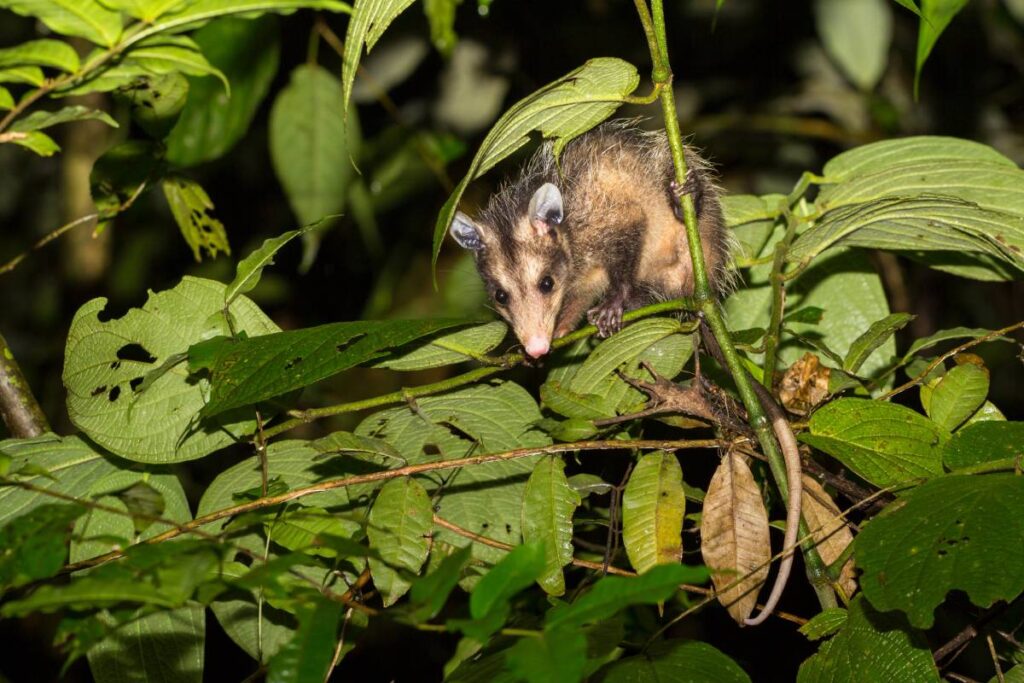
3. Remove Fallen Fruits and Seeds: Opossums are attracted to fruits and seeds that have fallen from trees and plants. Regularly clean up fallen produce from your yard to eliminate a potential food source. This also helps in keeping your garden tidy and reduces the likelihood of opossums paying a visit.
4. Install Motion-Activated Lights: Opossums prefer the cover of darkness. Installing motion-activated lights around your property can startle them and make your space less appealing. When the lights turn on unexpectedly, it disrupts their nocturnal activities and encourages them to seek shelter elsewhere.
5. Use Natural Repellents: Certain scents are known to repel opossums. Ammonia, vinegar, or citrus peels can be strategically placed around your yard to create an environment that is less attractive to these creatures. However, it’s important to refresh these repellents periodically, as their effectiveness may diminish over time.
6. Fence Off Vulnerable Areas: If opossums are frequent visitors, consider installing fencing to keep them out. Use materials like metal or wire, and ensure that the fence is at least 4 feet high, with the top angled outward. This not only prevents opossums from climbing over but also discourages them from attempting to breach the barrier.
7. Close-Off Hiding Places: Opossums seek shelter in dark, secluded areas. Seal off potential hiding spots around your property, such as under decks, sheds, or crawl spaces. Blocking access to these hiding places makes your property less attractive to opossums looking for a safe refuge.
8. Avoid Using Harmful Traps: While it may be tempting to use traps to catch opossums, it’s essential to avoid harmful methods. Many places have regulations on trapping and relocating wildlife. Instead, focus on preventative measures to discourage opossums from entering your property in the first place.
9. Keep Gardens Tidy: Maintain a well-kept garden by trimming overgrown vegetation and removing clutter. A tidy yard provides fewer hiding spots for opossums and reduces the appeal of your property as a potential habitat.
Conclusion
In a nutshell, opossums, with their quirky habits, aren’t out to harm us. They’re like nature’s cleanup crew, helping with pest control and keeping things in balance. Knowing the signs of their visits, from nighttime rustles to tiny footprints, lets us understand when they’re around.
To peacefully share our space, simple steps like securing trash cans and using natural scents can keep them at a friendly distance. So, let’s appreciate these creatures for their role in nature and find ways to coexist without any fuss.
